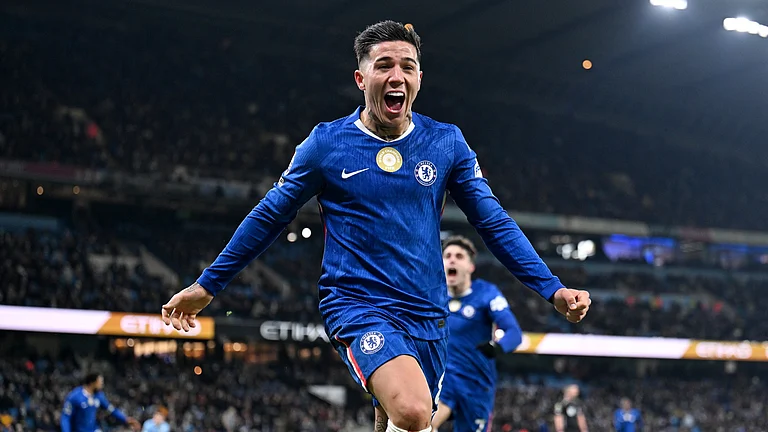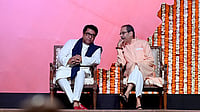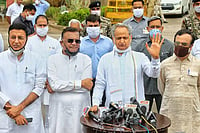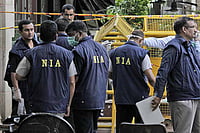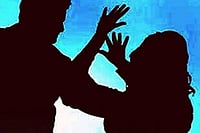Holi is around the corner and it’s a festive mood across the country. The festival of colours has a lot to offer in terms of celebration. With great gusto and a mood of happiness, people across states welcome the festival, splashing colours and moods of joy. However, like all other festivals, Holi, too, has a rich history dominated by the Hindu mythology of Radha and Krishna.
Why do we celebrate Holi: Know its history
Although an ancient Hindu festival, Holi has been popular among all non-Hindu communities since time immemorial. There are two dominant Hindu mythologies that trace back the origin of Holi.
The more popular one is the love story of Lord Krishna and his beloved Radha. According to a legend, when Lord Krishna had turned blue, after being poisoned with the breast milk of evil Putana, he appeared worried whether the fair-skinned Radha would ever like him. It was then when Krishna’s mother asked him to go and splash some colours on Radha’s face. Since then, the joyful splashing of colours turned into a tradition and festival in the Braj region of India.
Going by another legend, King Hiranyakashipu -- the king of demonic Asuras wanted everyone to worship him as the only God. However, the King’s son, Prahlada, disagreed and continued to worship Lord Vishnu. This agitated King Hiranyakashipu and he subjected Prahlada to cruel punishment. According to Bhagvata Purana, the King’s sister, Holika, tricked Prahlada to sit on a pyre with her while she remained covered in a cloak. However, eventually, the cloak flew from her body, covering Prahlad and saving his life. Vishnu appeared in the avatar of Narsimha, half man and half lion, and killed the king. This is why Holi begins with the Holika bonfire, which marks the end of evil.
Marking the end of winter and the advent of spring, Holi is never celebrated in one way across India. And here are the most popular and incredible ways, how Holi is celebrated across the nation.
Lathmar Holi and Holi Milan in Mathura, Vrindavan and other parts of north India
- Lathmar Holi and Holi Milan
The most popular celebration of Holi, as it attracts a crowd of tourists from across the country and world. Lathmar Holi is celebrated in the provinces of Uttar Pradesh especially Barsana, Mathura and Vrindavan -- the lands of Krishna. One of the quirkiest ways of playing Holi, in Lathmar Holi women run after men with lathis or canes and playfully hit them during this celebration. While in Kanpur, Holi lasts for seven days, and the last day has a grand fair called Ganga Mela or the Holi Mela, in Gorakhpur, people celebrate brotherhood through Holi Milan.
- Basant Utsav
Popular in West Bengal, Basant Utsav marks welcomes the Basant Ritu (spring season). People in the Bengal region play with gulal (coloured powder or abir). Dol is a significant part of the Holi celebration in Bengal when Dol Yatra (a religious gathering) is taken out on the main day.
- Holla Mohalla
Celebrated in Punjab, Holla Mohalla is the Holi celebration for the warriors! Celebrated a day before Holi, the event is an exhibition of martial arts, horse-riding, and poetry, primarily to pay homage to the bravery of Sikh warriors, particularly to the sect known as ‘Nihang Sikhs.
- Kumaoni Holi
Widely celebrated in the Kumaon region of the hilly state of Uttarakhand, here Holi is more of a musical gathering than splashing colours. The festival marks the start of the sowing season for the farming community. People light the Holika pyre (which is a bonfire with a green Paiya tree branch in the middle) known as ‘Cheer. In Kumaon, Holi is celebrated in three ways -- Baithaki Holi, Khadi Holi and Mahila Holi.
In Baithaki Holi, locals put up a musical performance based on classical ragas with a touch of spiritualism. In Khadi Holi, men are donned in traditional garb as they perform with instruments like the ‘Dhol and ‘Hurka. Going by the name Mahila Holi, this celebration is exclusively organized for women (mahila) and is a form of ‘Baithaki Holi.
- Shigmo
A type of Holi celebration in Goa, Shigmo or Holi is celebrated for around 14 days. It is organized as a massive carnival with traditional folk songs and street dances, apart from playing with colours. Being a coastal state and dominated by fishermen, boats are vibrantly decorated. The Shigmo is celebrated in two ways -- ‘Dhakto Shigmo’ meaning small in nature and is celebrated by the rural community while ‘Vhadlo Shigmo’, the big one, is celebrated by everyone else.
- Phoolon Ki Holi
The day before Holi, the Banke Bihari temple at Vrindavan celebrates the festival in a unique way with flowers instead of colours or gulal. However, unlike other Holi celebrations, Phoolon Ki Holi is a short affair of just about 20 minutes during which flowers are thrown at the devotees by the temple priests. Phoolon Ki Holi is widely celebrated across ISCKON temples in the country.










